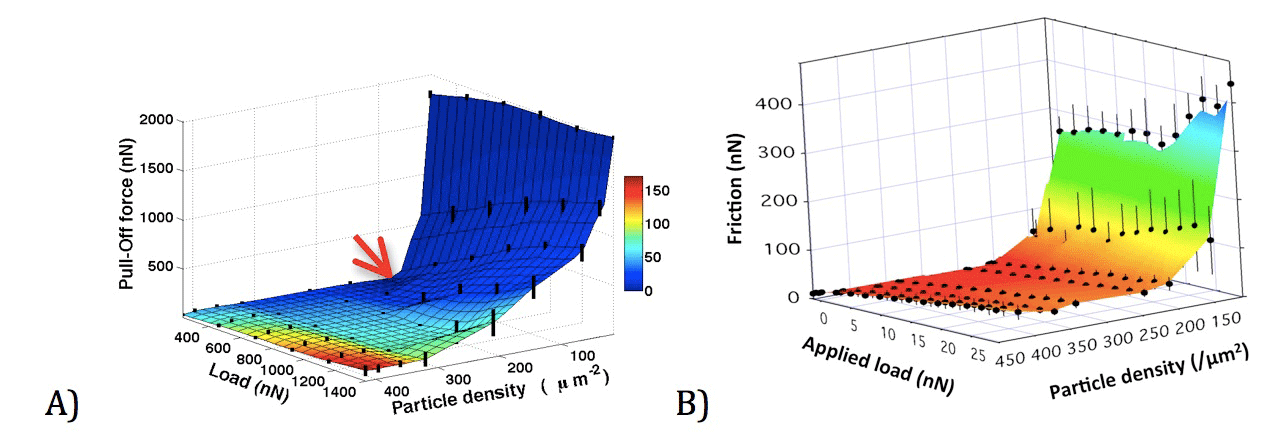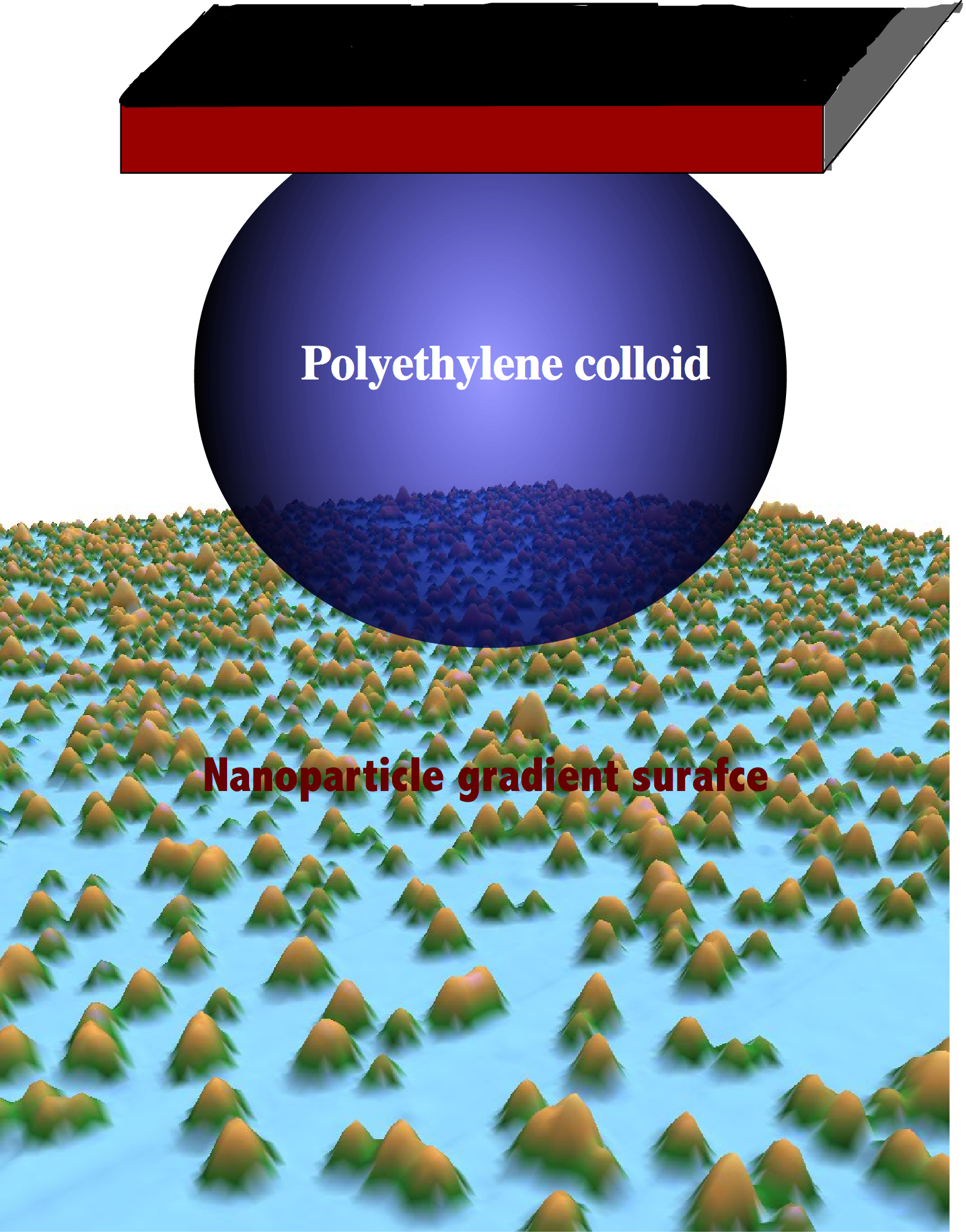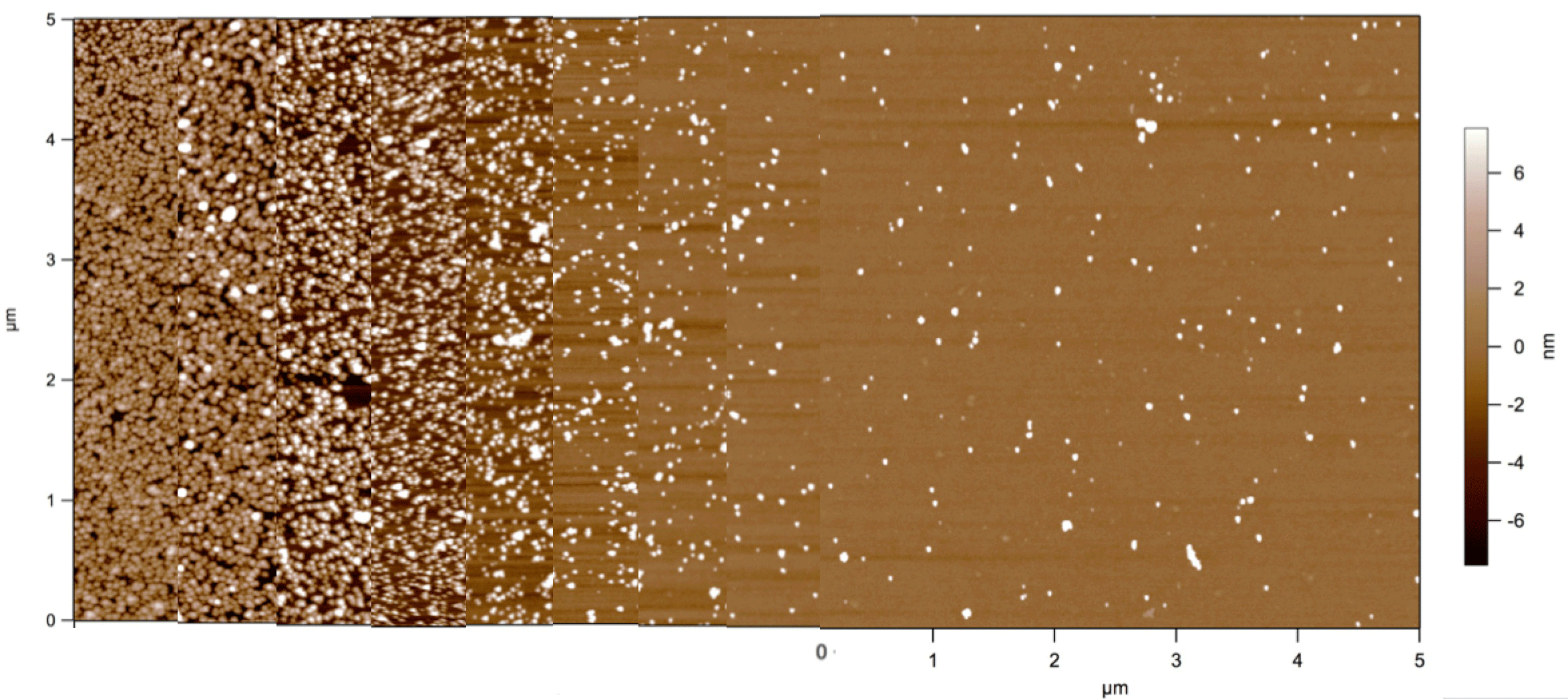Adhesion, Friction and Nanomorphology
When two polished surfaces come into contact, due to the existence of the micro/nano scale roughness on the surface, the actual contact occurs at discrete points or “asperities”, which effectively lowers the area of contact to a small fraction of its apparent value. Most real surfaces have roughness over many length scales and surface roughness is known to greatly influence the tribological, wetting and biological properties of the interface. In tribology, roughness can either increase or decrease the friction properties between two interacting surfaces, depending upon both the scale of roughness and the contact area formed at interface. Interfacial forces such as friction and adhesion can play dominant roles due to increased surface-to-volume ratio, especially when devices shrink in size, such as in MEMS/NEMS or micro/nano robotics. An understanding of adhesion and friction between surfaces requires knowledge of the real area of contact between them.
In our laboratory we employed the nano-particle gradient substrate1,2 with nano-particle density gradually varying along the substrate, to investigate the effect of roughness on adhesion and frictional properties while keeping all other experimental conditions identical.
The ability to investigate the real contact area with this well-defined surface allows the investigation of several adhesion and friction laws, developed for single and multiple asperity contacts. Adhesion and friction measurements on nano-particle roughness gradient substrates were performed using (polyethylene) colloidal-probe microscopy under a perfluorodecalin medium, in order to restrict the interactions to van der Waals forces3-5.

References
- C. Huwiler, T. P. Kunzler, M. Textor, J. Voros, N. D. Spencer, Functionalizable nanomorphology gradients via colloidal self-assembly. Langmuir 23, 5929 (2007).
- T. P. Künzler, PhD thesis, Surface morphology gradients. ETH No. 17049, (Dept of Materials, 2007).
- S. N. Ramakrishna, L. Y. Clasohm, A. Rao, N. D. Spencer, Controlling Adhesion Force by Means of Nanoscale Surface Roughness. Langmuir 27, 9972 (2011).
- S. N. Ramakrishna, P. C. Nalam, L. Y. Clasohm, N. D. Spencer, Study of Adhesion and Friction Properties on a Nanoparticle Gradient Surface: Transition from JKR to DMT Contact Mechanics. Langmuir 29, 175 (2013).
- S. N. Ramakrishna, PhD thesis, Adhesion and Tribology on Well-defined, Nano-scale Rough Surfaces: A Gradient Approach. DISS. ETH NO: 21136, (Dept of Materials, 2013).

